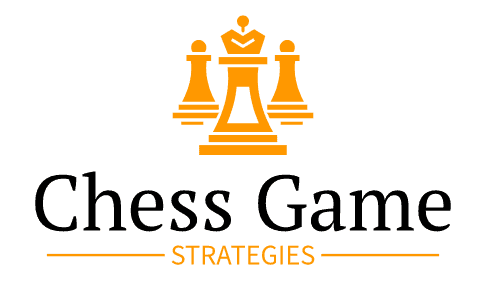
Chess Glossary : Section T
Tabia / Tabiya
An Arabic word for the position of the pieces at the start of a game of Shatranj.
Tablebase
A database, held on computer, that contains lots and lots and lots of pre-calculated analysis of set positions. See also Endgame Tablebase
Tactician
Refers to a player whose speciality is tactical play. A Tactician prefers to seek out short-term opportunities to gain some sort of advantage (usually material gain). It’s a more aggressive style of play than those whose game is considered to be more Positional.
Tactics
Usually mistaken for Strategies and vice-versa. Tactics are to do with small-scale moves – like capturing a Pawn vs. Knight – they’re kind of like mini-plans that happen as part of your overall Big Plans, better known as: Strategies.
Takeback
When both players agree to undo one or more moves, it’s known as a Takeback. Naturally, this situation only occurs in casual games; not in a tournament environment.
Tarrasch Rule
Siegbert Tarrasch, one of the strongest and most influential chess players during the later 19th century and early 20th century, had a rule that, in general, wherever there is a Passed Pawn – be it your own, or your opponent’s – you should seek to place a Rook ‘behind’ it. A Rook attacking an enemy Passed Pawn, should be moved above, then on the same File, now directly behind the Pawn. A Rook defending a friendly Passed Pawn, should be positioned directly behind it, on the same File.
TD
An abbreviation for the Tournament Director.
Tempo
This is similar to the concept of being above or below par, during a round of Golf – where the average (par) number of shots to find the hole might be 3 … If the golfer makes it in 2 shots or less, he’s below par, thus ahead of the course average; 4 shots and he’s 1 over par (one shot crapper than the average) … In Chess, where one move is equal to one unit of time, if a player aims to get a piece to a specific position in 3 moves, but does it in 2, he’s gained Tempo … Should it take 4 moves or more, he’s lost Tempo.
Territorial Domination
A strategy adopted by the Pawns, Territorial Domination is about acquiring and controlling squares on the board – the more squares you control, the greater your Territorial Domination, which in turn gives you greater options for planning your attacks.
Text Move
In books on chess theory, the author may use a particular game to give an example and, along with the main moves – the Text Moves – the author might provide alternative moves, to the ones that featured in the actual game. The Text Moves are usually printed in bold text, to distinguish them from the variations (the alternative moves).
Thai Chess
Popular in both Thailand and Cambodia and known as Makruk, this variation, of the more widely known international chess (what you’re learning about on this website), is said to require more strategic thought when playing.
The Ruy Lopez Question
After the Opening: 1.e4 e5 2.Nf3 Nc6 3.Bb5 a6 4.Bxc6 dxc6, Black has the Bishop-pair, but has also gained a structural weakness in the form of Doubled Pawns (c7,c6). White has the two Knights, and structural superiority. And so, The Ruy Lopez Question: “Which has the better game?”
Theme Tournament
Refers to a chess tournament where a particular Opening sequence is specified, which both players must stick to, such as the Ruy Lopez: 1. e4 e5, 2. Nf3 Nc6, 3. Bb5.
Theoretical Novelty
Refers to a particular move in the Opening that has never been seen before. Often abbreviated to “TN”. Sometimes just referred to as a “Novelty”.
Theory
1. Management have an accurate one: The Chess Glossary Team will be bumming the dole queue sooner than they think.
2. Popular manoeuvres or sequences of moves – such as Openings, Middlegame strategies and Endgame positions – that are well documented in Chess books, explained on DVDs and so forth.
Threat
A move or plan that can result in a serious disadvantage, for your opponent, if they don’t act to neutralize the Threat. For example, such actions that might neutralize the Threat could be to relocate a piece that’s in danger of capture; or to advance a pawn in order to protect/guard a critical square.
Three-time Repetition of Position
1. The Chess Glossary Team say it’s a first sign of Alzheimers … though they chronically forget the rest.
2. When the exact same position is repeated, three times in succession, a game results in a Draw (Stalemate) … Both Perpetual Check and Perpetual Persuits can cause a Drawn game … And it’s a strategy used, if possible, by any player who faces losing the game – far better to Draw and get ½ a point, than lose and get nothing at all.
Tiebreaks
In chess tournaments, a system that is used to break results when two or more players (or teams) tie for the same position, is known as a Tie-breaker. The organizers wish to have a single winner, so they usually setup a game and the winner of that game wins the tie and claims the higher, overall position in the tournament.
Time
1. A measure of material development by a player.
2. Can also refer to a player’s thinking time.
Time Control
1. Possible without a DeLorean, but only if (a) your alternative can hit 88mph and (b) some scally hasn’t made of with the Flux Capacitor.
2. Refers to the time each player is given to make a specific number of moves. For international Chess Tournaments, players usually get a Time Control of 2 hours in which to make 40 moves; while, the various Blitz games grant you much less time … But, whatever the game, you lose if you run out of time, before you’ve made your move quota.
Time Delay
A time control that delay a portion of time on a player’s clock. Examples include the Bronstein Delay and the Fischer Delay, respectively.
Time Pressure
Comes about when players are fast approaching their Time Control limit, but still have many moves left to make … If both players happen to be in this situation, it can make for a frantic finish to a game, inviting mistakes and opportunities in equal measure.
TN
1. Um, two-thirds of an explosive device.
2. Abbreviation for “Theoretical Novelty”.
Toilet Move
1. Not funny, if you’re in the portaloo at the time. Hilarious, for everyone else.
2. Englishman and chess Grandmaster Nigel Short came up with the name, which he described as being “any move which doesn’t immediately jeopardize your position” allowing you nip out for a quick Jimmy Riddle, as your opponent contemplates their move.
Top Board
Also known as “First Board”, it’s a term used in team chess games, matches and tournaments, and refers to a player who is pitched into battle against the strongest player of the opposition team. The remaining players are assigned to Second Board, Third Board, etc.
Touch Piece Rule
Also referred to as the “Touch Move Rule”, it manages a situation in over-the-board chess games where, if a player touches one of their Pawns or Pieces, they must then move it. The only time this rule can be bypassed is if, before they touch the piece, they say “J’adoube“, to let others know they’re simply adjusting their piece(s).
Tournament Book
The scores of all the games at a chess tournament are recorded in the Tournament Book.
Tournament Bulletin
In between tournaments, all the scores from the most recent tournament(s) are compiled and entered into the Tournament Bulletin, which provides a snapshot of the results, albeit it’s less comprehensive than the data recorded into the Tournament Book.
Tournament Director
(Known as the “Tournament Controller”, in Britain), this is the person who organizes the chess tournament and fulfills the duties of the arbiter, is known as the Tournament Director (often abbreviated to “TD”). TDs are responsible for ensuring all games are played in accordance with FIDE’s Laws of Chess.
Transposition
Can happen during the Opening stage of a game, where, after a certain number of moves, you reach the exact same positioning of your pieces, as if you’d played them in a different order.
Trap
1. Devious positional play made for the sole purpose of luring your opponent into making a mistake, from which you benefit – be it a capture, Check, Checkmate, or better positional play that gives you advantage on the board.
2. Often to be found accompanied with relish, during Chess Glossary Team discussions, with the words “Shut” and “Your”.
Trapped Piece
1. A piece on the board that is under threat from capture – or Checkmate, if it’s the King – but is either totally blocked in, without chance of escape, OR no matter where the threatened piece moves to, it’ll still be threatened and will most likely be captured.
2. “… We got a bleeder!!”
Travel Chess
1. Game of chess played on a special board and involving chess pieces with magnetic bases, so you can play a game even on the most poorly maintained roads, anywhere in the world, except England;
2. Stretching the imagination almost to breaking point, the Chess Glossary Team plan to link global tourism with playing chess, in the hope of work suddenly becoming a wicked disguise/excuse for being anywhere but in the office.
Trebuchet
1. A siege engine that hurled very large rocks at castle walls, which was used in the Middle Ages and has absolutely nothing to do with chess.
2. The Chess Glossary Team were just about to answer this one properly (honestly), when Wikipedia beat them to it: “A position of mutual zugzwang in which either player would lose if it is their turn to move “.
Triangulation
A tactic used to put your opponent in Zugzwang. On their next move, the opponent will be disadvantaged in some way. Occurs most often in the Endgame phase, notably with a King and Pawn Endgame situation; but can also include other Pieces, such as the Rook and Queen, respectively.
Tripled Pawns
Three Pawns, of the same side, on a single File, are known as Tripled Pawns and they are Weak … Try and avoid this formation, where possible.
Two Against One In The Center
This is specific to the Pawns … and, even more specific, focusing solely on the Pawns on the Center files (d and e, respectively), to the exclusion of all other Pawns on the board.

